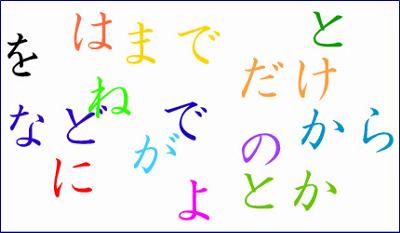
Get ready. Here begins the annoying things of this wonderful language.
Particles are very much hated by Westerners, as we generally don't have an equivalent in any Western language, so we have to stick to their functionality.
It's not impossible, but we can often confuse at what point we can place this or that particle because they have similar functions.
So, before pulling out your hair, know that it is possible to master them thanks to intense use, that is, the more you read and listen to these particles inserted in some context, automatically you will gradually be internalizing this concept.
We always insist that you shouldn't try to understand the reason for things, but accept them. So, this post, like the others, will be a base, so that after understanding what particles are, you can gradually, in fact, keep them inside yourself, without necessarily worrying about their grammatical functionality. .
So how about we get started?
Particles dictate the relationship between one word and another, between verbs and the words in the sentence.
In other words, they are the ?links? that exist within the Japanese language. Which does not necessarily make them prepositions of the Portuguese language.
In fact, it's far from it.
Can they indicate direction, who is talking about, where is talking about, what is who and etc?
As you can see, quite different from prepositions.
But it's not because it's hard that it means it's impossible.
Let's go slowly?
?(wa) particle

For those familiar with the Japanese hiragana alphabet, you know that this syllable (?) actually reads like: ha (ha).
So why did I put wa in parentheses?
Why when the syllable? is used as a particle, it is read as wa (wa).
Why?
Hmmm, I have no idea, I have to confess. Maybe it's something connected with the language's roots, but it's better not to speculate, isn't it?
This particle serves to indicate the subject of the sentence, about what they are talking about. In short, the topic of the sentence.
????????????? Me am Beatrice
????????????????This It's a pencil.
Do you understand? It's not a preposition, so it doesn't have a correct translation.
He just indicates who or what is being talked about and "points out". So, in the translation you should use the one that best fits your language.
In this case, the am and It's.
Particle ? (ga)

Well, this one doesn't need to be talked about much.
This particle indicates the subject of the sentence, the one to whom a characteristic is attributed or takes an action.
It is often confused with the ? particle because of its similar functionality.
Since it indicates the subject of the sentence, and the topic of the sentence, in the case of the ? particle, in many cases they look the same.
??????????????? ??The moon came out (born)
???????????????? The head hurts.
In this case, there isn't a word that shows up as a translation for the particle ?, it's there, just showing the subject of the sentence, and if we understand that, it's pretty good.
To the next. Good studies!
Super interessante! entendi bem depois dessa explicação. Arigato!
Olá Guilherme!
Eu também! Vamos agradecer a Beatriz pelo artigo.
Hug!